While there are some systems that don’t require any brewing knowledge or skill (here’s looking at you, LG and Pico C), most homebrew automation devices help brewers perfect their craft, not replace it. These tools range from inexpensive to very expensive, and have anywhere from a minor to a major impact on brew day.
Automation in homebrewing is a contested topic, but it shouldn’t be. Here is a rundown on six popular homebrew automation systems.
Beersmith ($14.95-$49.95/year)
Beersmith does not automate any physical aspects of the brew day. What it can do is help make your recipes and measurements more consistent. This software helps the brewer design recipes according to Beer Judge Certification (BJCP) style guidelines. This includes beer’s color, alcohol by volume (ABV), and bitterness, measured as International Bitterness Units, or IBU.
As you advance your skills, Beersmith offers measurements for manipulating brewing water and pH, as well as calculations for yeast starters.
Pros
- All-grain and extract compatible. Any homebrewer at any level can benefit from this software.
- Ready-to-use recipes. Beersmith takes the guesswork out of recipe creation. It can especially help alleviate the daunting transition from malt extract to all-grain brewing.
- Better outcomes. Knowing if your recipe aligns with style guidelines helps create beer similar to commercial brands. Do you have enough roasted malt for a stout? Beersmith will let you know, before you wait two to three weeks to taste the final beer.
- Easy to use. It’s not the most aesthetically pleasing software (think Microsoft Word from the late ‘90s), but its interface is easy to navigate. What it lacks in finesse, it makes up for in clarity and accuracy.
Cons
- There are no real cons. The subscription costs less than two packs of liquid yeast. Plus, the company offers a 21-day trial to ensure customers are satisfied before investing.
Blichmann Tower of Power ($250)
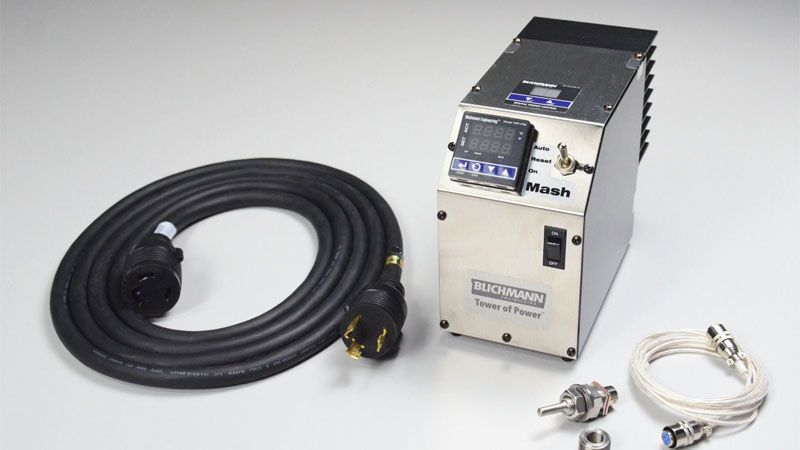
The Blichmann Tower of Power is ideal for more advanced homebrewers who are looking to improve their recipes by brewing consistent batches. (Perhaps for a competition?) One of the original homebrew automation tools, it controls the temperature of the mash tun within +/- 0.5°F. It also allows a brewer to step away from constantly adjusting the burner or watching the thermometer, without running the risk of the mash getting too hot and denaturing enzymes.
Pros
- More mash control. The extreme precision of the Tower of Power ensures you’re mashing at the same temperature and duration every brew day, so batches become repeatable. This is a huge plus when you brew often.
- Easy set up. Several options can be customized to the equipment you already have.
- Gas or electric. Tower of Power can be used with indoor electric systems or propane systems. As someone who started homebrewing outdoors using propane, this was a major benefit!
Cons
- Price for impact on brew day. This is a steep investment for a piece of equipment that really only regulates temperature.
PicoBrew Zymatic ($2,000)
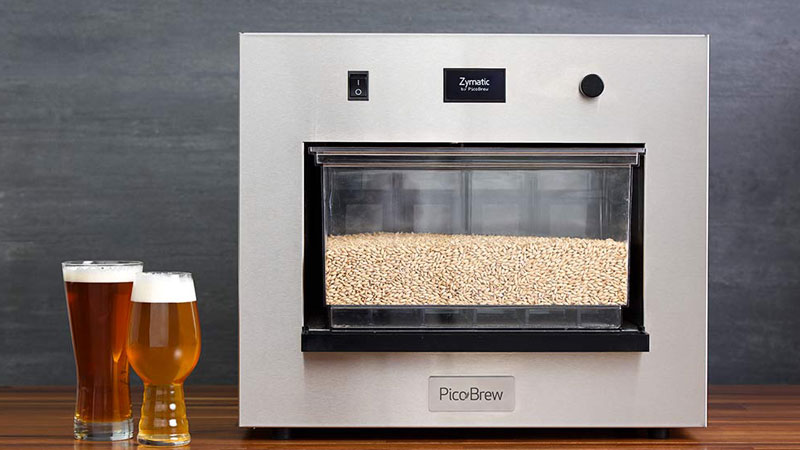
The price of the PicoBrew Zymatic is prohibitive, to say the least. It was PicoBrew’s first product and was groundbreaking as the “world’s first fully automatic all-grain brewing appliance,” so its price point seemed less steep at the time, but since the product’s debut many similar appliances have followed.
The word “automatic” in the description is a bit misleading: While the steps of heating the strike water, mash, mash out, sparge, and boil are automated, other aspects of the brew are not. Building the grist, setting the mash rest temperatures and durations, and hop additions are calculated and controlled by the brewer. (This may be why the brand advertises this product “for brewery professionals,” and many commercial breweries have one tucked away somewhere.)
Pros
- Easy clean up. Compared to a three-vessel or brew-in-a-bag setup, cleaning and sanitizing the Zymatic is simple, and can be done in a large kitchen sink.
- Small space friendly. The Zymatic can be stored in a standard closet. This is especially beneficial to aspiring brewers living in apartments.
- Highly customizable recipe software. The Zymatic allows all steps of the recipe to be updated manually, giving the brewer a high degree of control.
- Fermenting in kegs. The Zymatic brews, ferments, and ultimately serves beer from a single vessel. This is another major space saver, and makes serving easy, if you plan to serve from a keg. It also means there’s no need to sanitize or prep a fermenter on brew day.
Cons
- Price. The Zymatic is very expensive. There are other more affordable systems.
- Small batch size. The Zymatic can only make 2.5-gallon batch sizes. Brew days take five to six hours, and fermentation can take up to two weeks. That’s a lot of time for about 26 bottles of beer, especially when you can do this with regular homebrew equipment much cheaper.
- Chiller not included. Brewers need to provide their own coil or plate chiller.
- Fermenting in kegs. Cornelius Kegs, or “corny kegs,” are tall, narrow, cylindrical kegs that originate in the soft drink industry and are widely used by homebrewers. While there are positives to fermenting in a keg, the shape of the corny keg does have an impact on flavor outcomes. You could ferment in another vessel, but that’s an extra purchase and more labor, and you bought an expensive machine!
Grainfather Connect ($999)
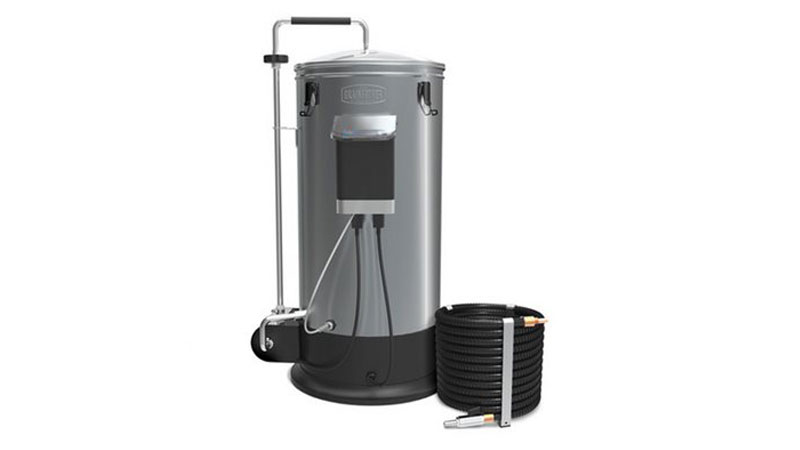
The Grainfather is an all-in-one, all-grain brewing machine. It includes a strainer-like bucket that allows for a sparge and lauter, and the vessel is large enough to make a 5-gallon batch, which yields up to 50 beers.
Grainfather is controlled by a smartphone app, where users can build, edit, and save recipes. Mobile notifications let the brewer know when to heat sparge water, add hops, and perform other brew day actions.
Pros
- All-in-one system. The Grainfather comes with a wort chiller, so all steps of making and cooling wort are covered.
- Ferment in anything. Brewers can ferment in any vessel of their choice, such as a glass carboy or covered plastic brew bucket.
- Ease of use. The app makes each step of the brewing process clear and easy to execute. It is not hard to have a perfect brew day on this system.
Cons
- Price. The Grainfather is an investment, even if it is half the price of a PicoBrew.
- App problems. The recipes for Grainfather are mostly customizable. However, some automatic calculations can be frustrating for brewers looking for full control. For example, strike and sparge water are automatically calculated, which is annoying for brewers looking to try no-sparge brew days, or who want to experiment with mash thickness.
- Proprietary parts. Things like nuts and gaskets need to be replaced from the Grainfather store, and parts ship from New Zealand, which is both costly and time-consuming.
Robobrew ($450)
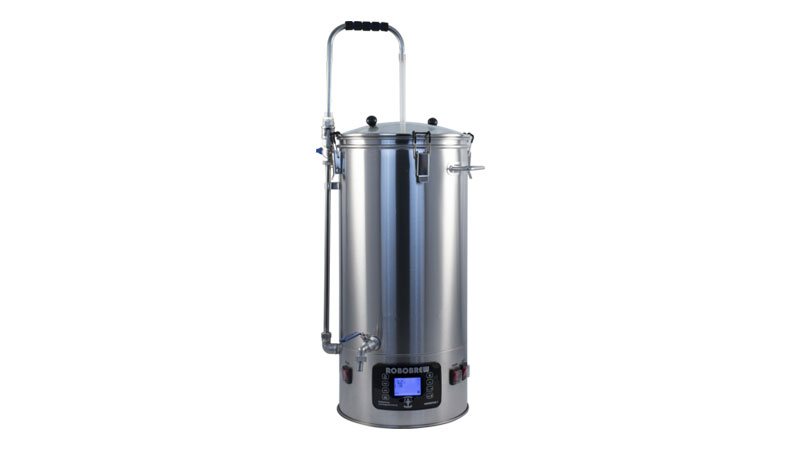
Robobrew is a less expensive alternative to the Grainfather, with fewer bells and whistles (no app, and a less powerful heating element and pump). Although this author doesn’t have hands-on experience with this particular system, consumer blogs and product reviews (and many, many tweets) indicate the following pros and cons.
Pros
- Price point. The Robobrew allows you to complete a 5-gallon, all-grain brew day at a lower cost than other tools on the market.
- Ferment in anything. Brewers can ferment in any vessel of their choice.
Cons
- Weak pump and stuck mashes. The most common complaint is that the pump can become “stuck” with hop material and high-gravity mashes. Although this can be relatively easy to fix, it is an inconvenience nonetheless.
- Material quality. Several reviews mention sharp edges, lower quality metal, and imperfect welds. The Robobrew is also single-walled, so many users insulate it with the $20 add on jacket to help maintain temperature. With the lower price point, some quality sacrifices are to be expected.
- Difficult user interface. Brew day settings must be entered through a digital interface, which is inconveniently located at the bottom of the machine. Since brewers need to pour hot sparge water and heavy grain into the Robobrew, it doesn’t make much sense to have the machine set up on a high counter, so brewers have to sit on the floor or bend over to enter and check temperatures.
The Brewie+ ($1,800)
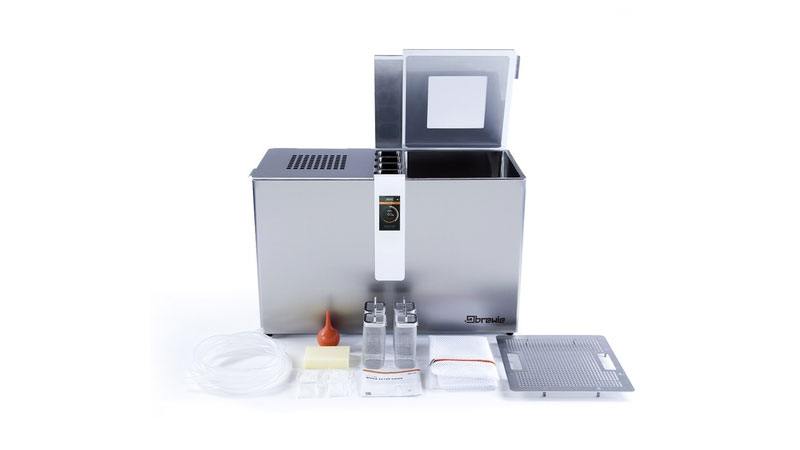
The Brewie+ is a two-chamber, fully enclosed system that brews wort. Like other systems, the wort needs to be pumped into a fermentation vessel and fermentation is not automated. There is less chatter about this device on American homebrew forums, but an unaffiliated “Brewie Owners Group” on Facebook has over 1,000 members from around the world.
Pros
- Cleans itself. Brewers say it all the time, “90 percent of brewing is cleaning.” Brewie+ has fully automated cleaning and sanitizing settings.
- No-worry wort. This is the epitome of “set it and forget it” wort creation. Once the system is calibrated and running, the brewer can walk away, run errands, or take a nap and the wort will be brewed to pre-set specifications.
Cons
- Massive and heavy. Several blog posts and articles mention the “enormous” size of the Brewie+. At 65 pounds, it is not easy to lift into a high place or store on a weak shelf. Finding a place to store it may be difficult.
- Delicate calibration. The Brewie+ must be calibrated before every use, and some users complain of calibration fails. A system that will not calibrate will not allow the user to brew.
